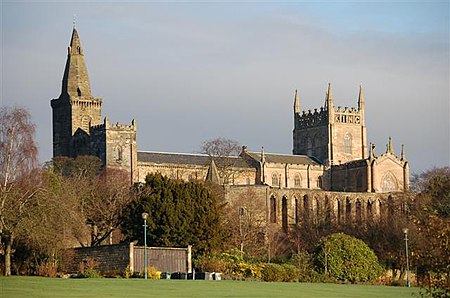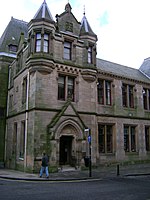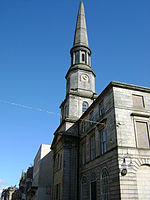Dunfermline Abbey
1128 establishments in ScotlandBenedictine monasteries in ScotlandBuildings and structures in DunfermlineBurial sites of the House of BruceCategory A listed buildings in Fife ... and 15 more
Christian monasteries established in the 12th centuryChurch of Scotland churches in ScotlandFormer Christian monasteries in ScotlandHistoric Environment Scotland propertiesListed churches in ScotlandListed monasteries in ScotlandMuseums in DunfermlineProtestant churches converted from Roman CatholicismReligious buildings and structures completed in 1150Religious museums in ScotlandReligious organizations established in the 1120sRomanesque architecture in ScotlandRuined abbeys and monasteriesRuins in FifeScheduled Ancient Monuments in Fife

Dunfermline Abbey is a Church of Scotland parish church in Dunfermline, Fife, Scotland. The church occupies the site of the ancient chancel and transepts of a large medieval Benedictine abbey, which was sacked in 1560 during the Scottish Reformation and permitted to fall into disrepair. Part of the old abbey church continued in use at that time and some parts of the abbey infrastructure still remain.
Excerpt from the Wikipedia article Dunfermline Abbey (License: CC BY-SA 3.0, Authors, Images).Dunfermline Abbey
St Catherine's Wynd, Dunfermline Central Dunfermline
Geographical coordinates (GPS) Address External links Nearby Places Show on map
Geographical coordinates (GPS)
| Latitude | Longitude |
|---|---|
| N 56.0699 ° | E -3.4636 ° |
Address
Dunfermline Abbey
St Catherine's Wynd
KY12 7PH Dunfermline, Central Dunfermline
Scotland, United Kingdom
Open on Google Maps










